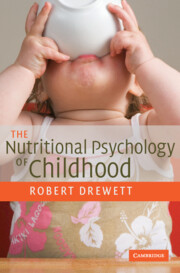Book contents
- Frontmatter
- Contents
- List of illustrations and table
- Preface
- 1 Introduction
- 2 The development of feeding behaviour: infancy
- 3 The development of feeding behaviour: weaning onwards
- 4 Born too small or born too soon
- 5 Nutritional deficiencies
- 6 Nutritional aspects of some physical conditions
- 7 Failure to thrive
- 8 Adiposity and obesity
- 9 Adolescence and the eating disorders
- 10 Some concluding thoughts
- References
- Index
9 - Adolescence and the eating disorders
Published online by Cambridge University Press: 22 September 2009
- Frontmatter
- Contents
- List of illustrations and table
- Preface
- 1 Introduction
- 2 The development of feeding behaviour: infancy
- 3 The development of feeding behaviour: weaning onwards
- 4 Born too small or born too soon
- 5 Nutritional deficiencies
- 6 Nutritional aspects of some physical conditions
- 7 Failure to thrive
- 8 Adiposity and obesity
- 9 Adolescence and the eating disorders
- 10 Some concluding thoughts
- References
- Index
Summary
Eating disorders
In infancy and early childhood there are three ‘feeding and eating disorders’ that are formally recognised in DSM-IV, the Diagnostic and Statistical Manual of Mental Disorders of the American Psychiatric Association (APA, 1994). The first two are pica (the persistent eating of non-nutritive substances) and rumination disorder (the persistent regurgitation and rechewing of food). Both these are often associated with developmental disabilities. The third, feeding disorder of infancy or early childhood, essentially refers to failure to thrive when it is associated with failure to eat adequately.
The eating disorders that characteristically arise over the period around puberty, however, are much more obviously psychiatric disorders, related to depression and the other affective disorders of adults. In DSM-IV two eating disorders are given specific diagnoses, anorexia nervosa and bulimia nervosa. A third category, eating disorder not otherwise specified, is used when some of the criteria for the two specific diagnoses are met, but not others.
There are four diagnostic criteria for anorexia nervosa (APA, 1994). The first involves a refusal to maintain a body weight at or above a defined minimum, specified as 85% of the ‘expected’ weight given the person's age and height. This may result from a loss of weight, or in young people who are still growing, from a failure to gain weight. The second is an intense fear of gaining weight or becoming fat.
- Type
- Chapter
- Information
- The Nutritional Psychology of Childhood , pp. 186 - 213Publisher: Cambridge University PressPrint publication year: 2007



